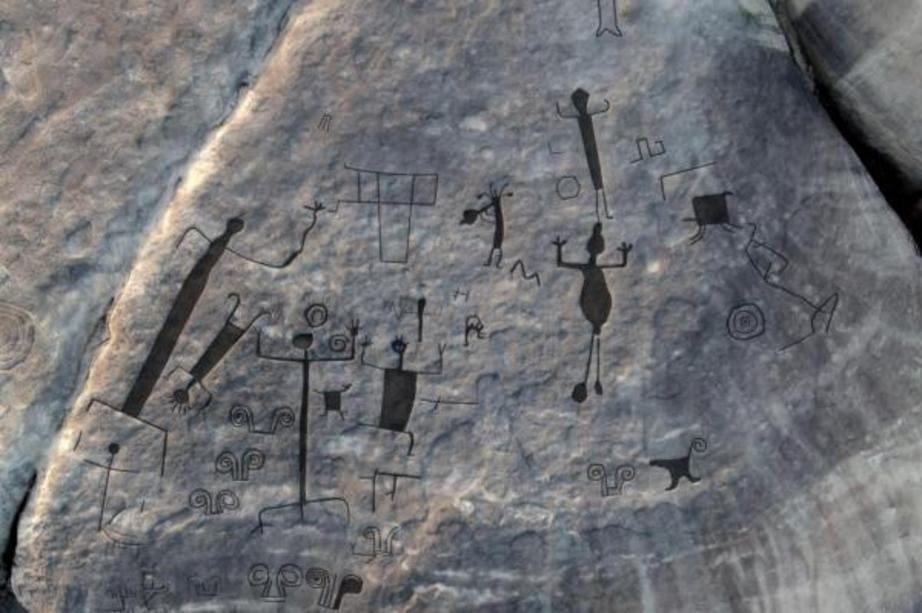Scientists map ancient rock art in Venezuela
"These engravings are embedded in the everyday -- how people lived and travelled in the region," archaeologist Philip Riris said.
Dec. 7 (UPI) -- Researchers have mapped Venezuela's rock art in unmatched detail. The new map, published this week in the journal Antiquity, features some of the largest rock engravings in the world and some carved as many as 2,000 years ago.

The engraving features a flautist and several other human-like figures. Scientists believe it depicts a ceremony celebrating renewal and peak harvest, just before the onset of the wet season. Photo by UCL
One of the rock art panels featured in the new map covers an area of nearly 3,300 square feet and hosts 93 different engravings. Another motif features horned snakes stretch nearly 100 feet in length.
All of the mapped art is found in the Atures Rapids, a region of Amazonas, Venezuela's southernmost state. The sparsely populated region is thought to be the original home of a native people known as the the Adoles.
Scientists mapped the engravings using drones. Low flows throughout the Orinoco River basin left many of the engravings more exposed than usual.
"The Rapids are an ethnic, linguistic and cultural convergence zone. The motifs documented here display similarities to several other rock art sites in the locality, as well as in Brazil, Colombia, and much further afield," Philip Riris, an archaeologist at University College London, said in a news release. "This is one of the first in-depth studies to show the extent and depth of cultural connections to other areas of northern South America in pre-Columbian and Colonial times."
Often, rock art is associated with spiritual ceremonies and burial sites, but many of the engravings surrounding the Orinoco River communicate the importance of natural resources and document the patterns of rising and falling river.
"These engravings are embedded in the everyday -- how people lived and travelled in the region," Riris said.
Archaeologists have studied many of the region's pieces of rock art over the decades, but never on the scale of the most recent comprehensive survey.
The engravings in the Atures Rapids reveal the importance of the connections between pre-Columbian peoples and environment. One motif features a flautist surrounded by several human-like figures, a depiction of what scientist believes was a ceremony celebrating renewal, possibly performed just before the onset of the wet season, when islands in the region remained navigable and the harvest was at its peak.
Scientists hope their continued study of the region's rock art can help them better understand the organization, migration patterns and interactions among the region's pre-Columbian populations.
"Mapping the rock engravings represents a major step towards an enhanced understanding of the role of the Orinoco River in mediating the formation of pre-Conquest social networks throughout northern South America," said lead researcher José Oliver.
